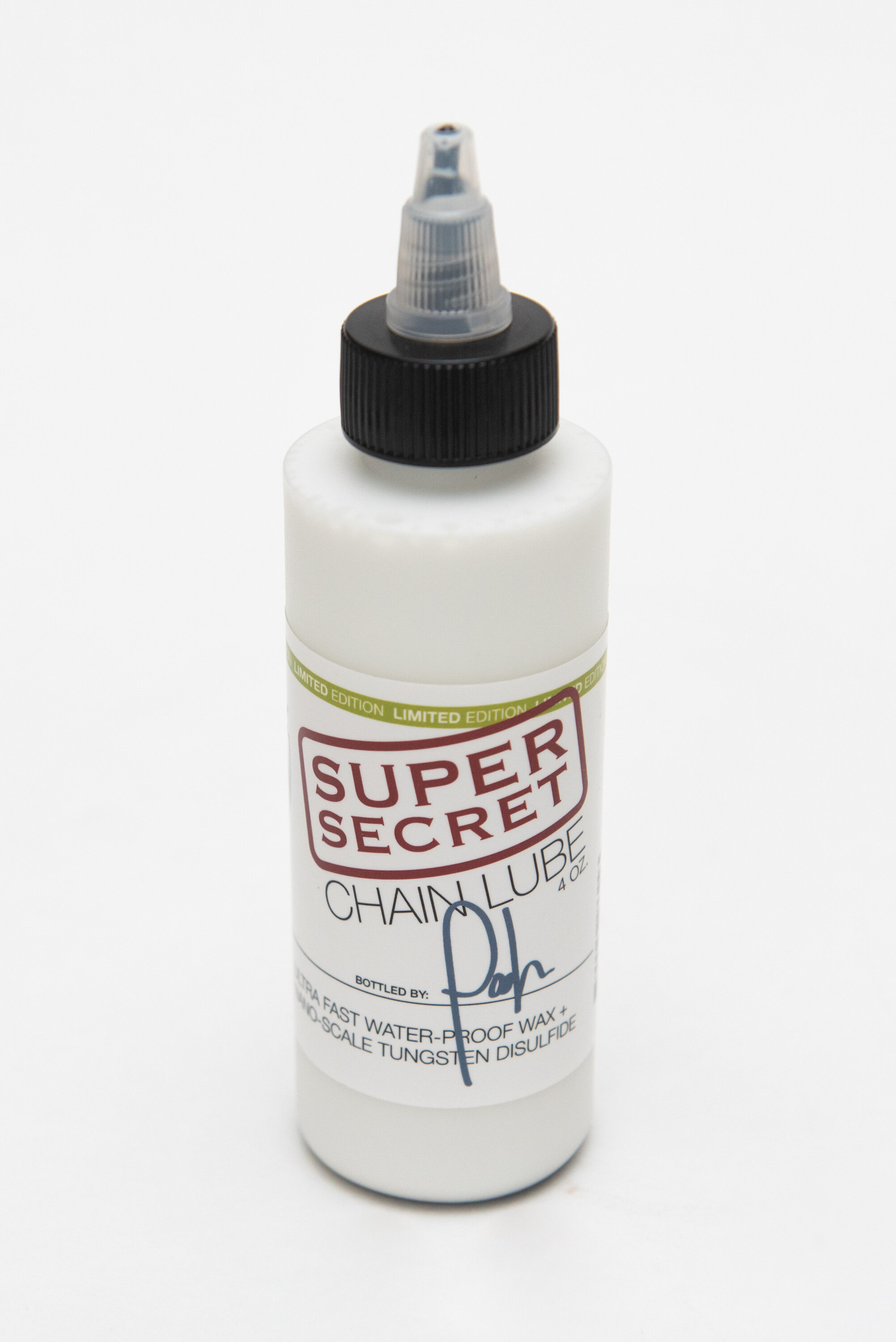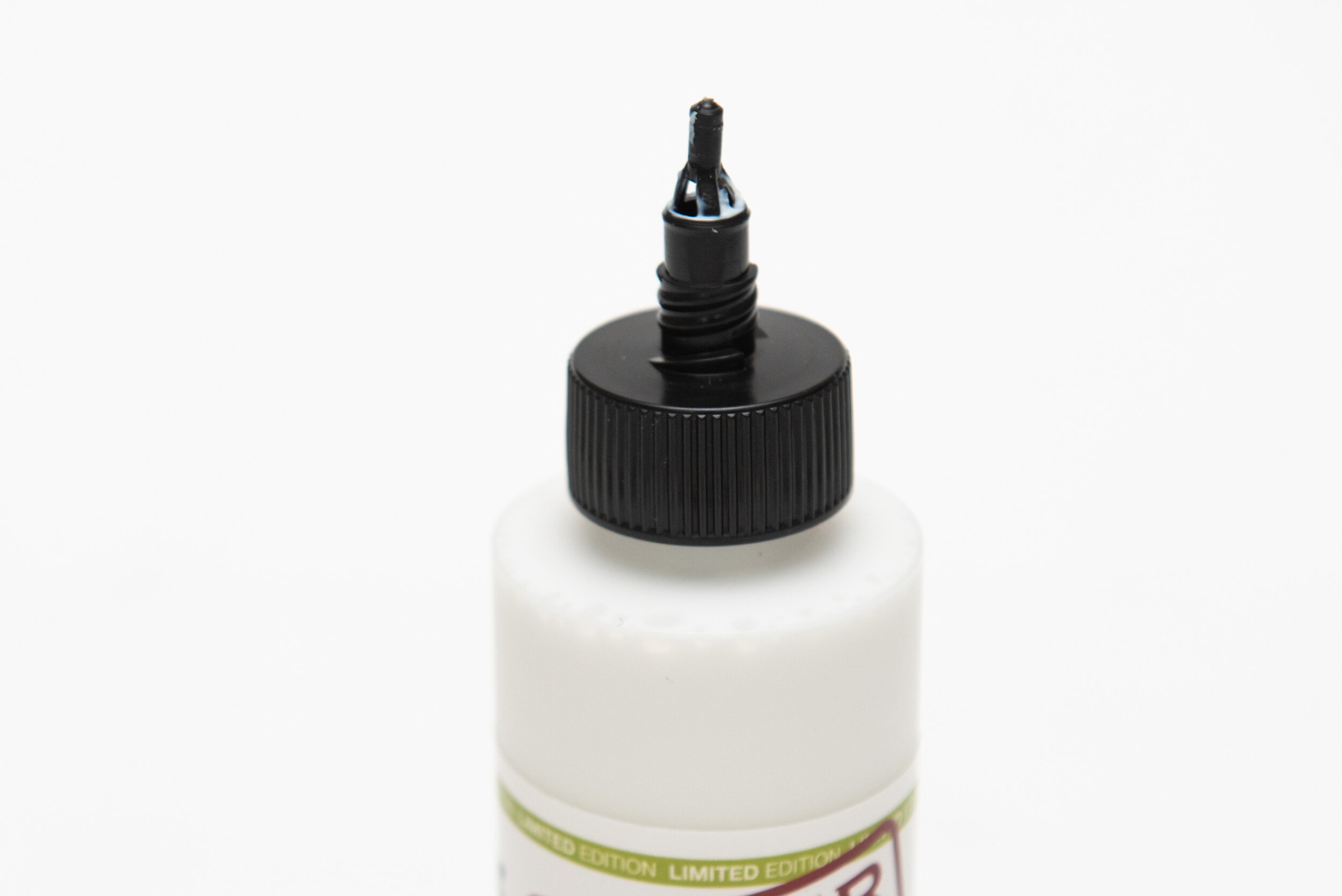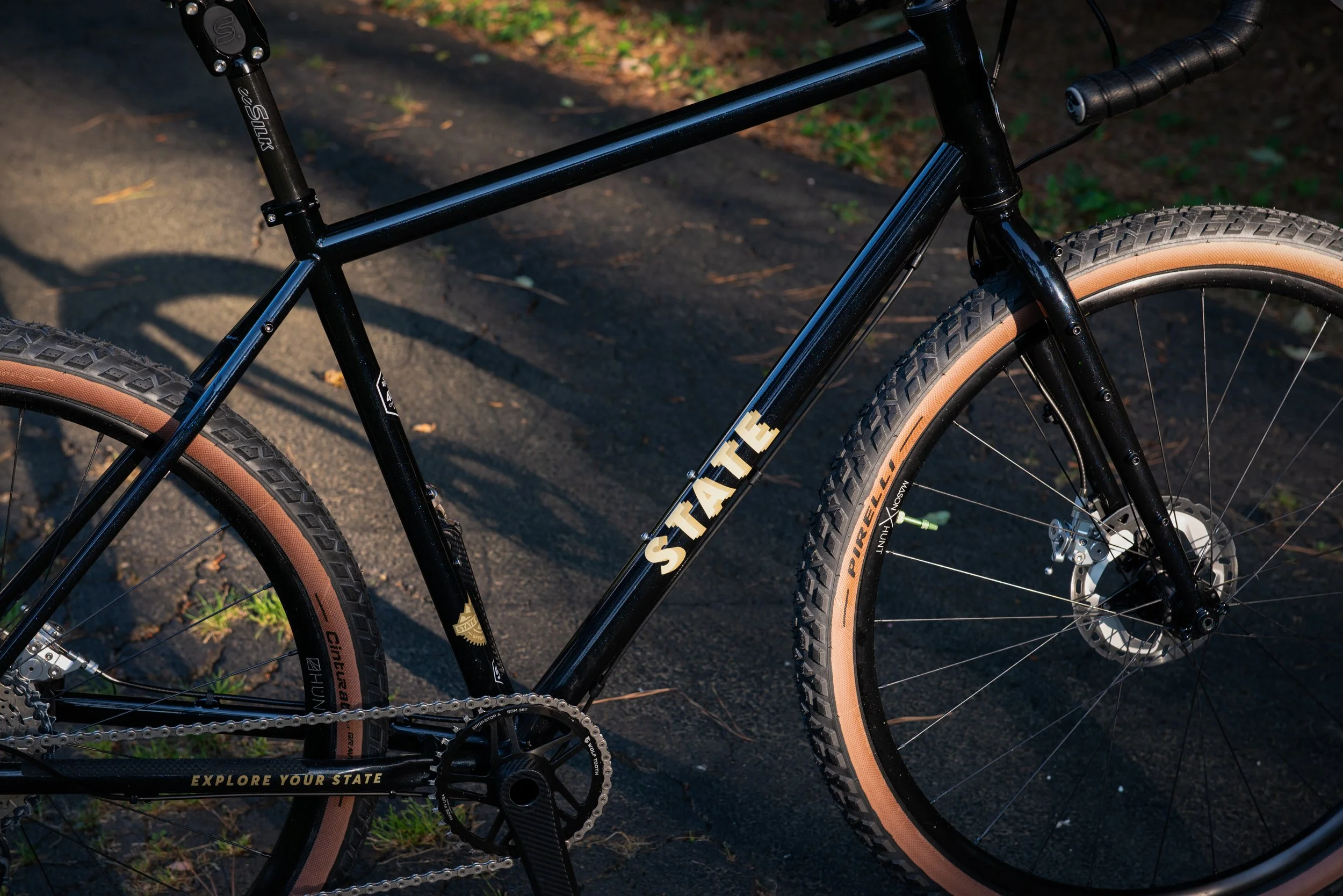Silca Chain Lubes - An Average User Experience
Disclaimer: This post contains affiliate links, through which we earn a commission.
When it comes to picking something as simple as a bicycle chain lube, consumers now-a-days are completely overloaded with low friction data, watt-savings, viscosity information and microscopic analysis of chain wear rates. Data, as much as it’s important, has become so overburdening that the non quantifiable user experience of a product or service can sometimes be completely overlooked. When it comes to chain lubes, all I really need to know is: How easy is it to apply, how clean it will keep my chain and how silent it runs. In today’s post, I take a non-scientific, average user experience approach to try to provide answers to these three basic questions as it relates to Silca’s chain lubes. Let’s get started!
Silca Chain Lubes
In recent months I’ve come to really appreciate the high quality that can be associated with Silca’s products. This premium bike accessory brand is well-known for the attention to detail that goes into their manufacturing. If something is labeled as Silca, then you can rest assured that countless hours have gone into perfecting the product. In fact, if you really like to dive into meticulous presentations about bike products, then be sure to check out Silca’s YouTube channel, where CEO Josh Poertner, can mesmerize you for hours with his detailed knowledge of the most intricate parts of each product. Be warned: Josh really is an excellent salesman who will explain their product’s superiority so effortlessly that you’ll instantly want to buy whatever he is promoting.
I’m a prime example of someone who immediately bought some Silca lube after viewing the demonstration of the Super Secret Chain Lube. Another equally impressive explanation resulted in me buying Silca’s new Synergetic oil-based chain lube. In this post I want to take a look at both of these products and provide my thoughts about how well each has performed during my testing. I don’t intend to go into any of the detailed scientific explanations that you often find with chain lubes. No watt-savings and drivetrain efficiency claims to see here! The average user, quite frankly, cannot test those elements for themselves. I’ll leave it to Silca, and others trained in the field of engineering, to dive into all the science behind the lubes. There are loads of resources that can accurately test the lab results to which Silca lays claim. If you want to browse through endless graphs of friction and wear rate data, then be sure to check out Zero Friction Cycling for detailed lab testing results. In this review I’m going to focus on the aspects of the products that I can actually see and test for myself. If you want to know what the real world, day-to-day experience actually entails then stick around as we review both of Silca’s chain lubes.
These two products are completely different and aim to appeal to two different types of cyclists. The Super Secret lube is a wax-based lubricant that is aimed at the high-performance cyclist who wants to run the cleanest and most efficient drivetrain possible. Marginal gains are the name of the game when it comes to this particular product. The Super Secret Chain Lube has gained great popularity since its launch and I’ve even stockpiled a few containers in the fear that it might not be readily available as it continues to gain favor. Scientific tests have also revealed that this chain lube lives up to the hype and delivers exceptional results when compared to other lubes on the market. On paper it has a lot going for it, this despite the hefty price tag. Given marginal gains and higher performance benefits, I decided to use the Super Secret Chain Lube solely on my road bike where riding conditions are certainly cleaner than those I normally encounter on my gravel rides.
On the flip side, you’ll find the Synergetic lube, which, as an oil-based lube, should appeal to the average rider who simply wants to slap on some chain lube and be done with it. This is ideal for someone who is time crunched or simply doesn’t want to deal with all the additional requirements (initial chain cleaning) that come with a wax-based lubricant. Most of the regular chain lubes that have been used on bikes over the past few decades fall into this “wet lube” category and Silca certainly wanted to maintain a presence in this market segment after their NFS lube had to be discontinued due to a key input becoming unavailable. Silca makes some impressive statements about this new lube and calls it the “world’s fastest, quietest, longest lasting oil-based chain lube.” The special feature to this lube is a synthetically created tribofilm that acts as a protective and lubricating layer on the chain. It’s still early days for this lube and we’ll have to wait a while before finding out if the lab testing backs up the marketing claims. Given that things get fairly dirty and marginal gains don’t apply as much with gravel, I decided to use the Synergetic lube solely on my gravel bike’s drivetrain.
With those basic explanations of each product, let’s look at how they differ when it comes to everyday use. I’ll break it down by looking at the application process, the cleanliness of your drivetrain and also what level of noise you can expect when you apply each of these lubes.
1) Ease Of Application & Range Between Applications
Super Secret Chain Lube:
If you’re a long-time follower of this blog, then you’ll remember the post that I wrote about waxing your chain. In that post, I specifically looked at how well the hot melt chain waxing method worked and tested its suitability for gravel riding. My key finding from that experiment was that the hot wax method worked really well and delivered excellent results, but it also required substantial time and effort to maintain. The process of taking the chain off, waiting for the crockpot to reheat the wax and then having to deal with the chain installation was just too time consuming and it wasn’t a sustainable workflow for my type of riding. There had to be an easier solution, something that provided the benefits of a waxed chain, but required less effort to maintain. Enter Silca’s Super Secret lube!
As a drip wax, the Super Secret Chain lube requires far less effort than the hot melt alternative. The initial chain clean (see Silca’s video) and the requirement to have the chain almost surgically clean before applying the lube is, however, still a prerequisite. I’ll address on-going cleaning later. Once the chain has been prepped for application, things become much easier and applying the Super Secret chain lube is smooth sailing. The tip of this bottle is well-designed and features a non drip nozzle that works exceptionally well. It also ranks very favorably from a time management perspective. Whereas the hot melt wax application process would take me anywhere between 30-45mins to complete, the Super Secret chain lube can be applied in under 10mins. Silca does however recommend that you allow 24 hours for the lube to fully dry. From an ease of application standpoint, the Super Secret Chain Lube rises head and shoulders above any other chain wax methods that I’ve tried.
The second part of the application question relates to how often you’ll need to reapply the lube after it’s on the chain. My one critique with the hot melt wax process was that the 200-250km range between applications just wasn’t enough when you consider the effort it takes to re-wax the chain. In contrast, the Super Secret lube can be applied in a matter of minutes, and, as such, can be reapplied as often as needed. Silca officially states that the re-lube interval for the Super Secret Lube is around 400 kms (250miles). Depending on how particular you are with noise coming from the drive train, I would say that my re-lube intervals fall between 250-350km. Not massive range, but still decent given the time efficient application.
Synergetic Lube:
Next, let’s turn our attention to the Synergetic lube and address its application considerations. Unlike its wax-based counterpart, this lube does not require the chain to be deep cleaned before application. Having a clean chain is of course always recommended when you apply fresh lube, but in this particular instance, it’s also not the end of the world if your chain isn’t spotless before you apply the next round. This oil-based lube should still filter down to the lower level and lubricate the chain. Silca even claims that it could displace the factory grease altogether over time. Silca is very proud of their tungsten disulfide ingredient, which forms a tribofilm layer on the chain. I’m certainly not a chemical engineer, which means that most of the fancy terms that they throw around on the website (WS2, ZDDP, Type V base oil, Type IV-POA base oil) don’t mean a whole lot to me. The ease of application and frequency of application is of far greater important to me when it comes everyday use.
If you’re looking for precise lube application, then you won’t find anything close to Synergetic on the market. The lube bottle comes with a precision applicator tip like no other. Numerous brands will state that it’s best practice to apply a single drop of lube to each chain roller, but their bottles often do not allow for such precise application. This is certainly not the case with Silca’s product. You can control exactly how much lube goes onto the chain and where that lube lands on the chain. Simply put, you won’t waste a single drop, which is surely a good thing considering the price tag of Synergetic. This also means that you will have far less excess lube on the chain that serves only as a dirt magnet.
The intervals between applications are also better when you compare the Synergetic lube with the Super Secret Lube. Silca states that the re-lube interval for Synergetic comes in at around 800km (500 miles), but they also rightfully state that it should be reapplied after each “wet or rainy ride.” I fall into that second categorization, since the weather here in Northern Virginia frequently presents some form of precipitation. This means that I’ll most likely run into some kind of mud along my gravel rides - especially if you consider that I do most of my off-road riding on tucked away MTB trails. I, therefore, really haven’t been able to push the upper limit of this lube’s range. I’m left to clean my bike well before I reach the 500-mile marker. I wash my bike (water, soap and degrease the chain) on a weekly basis and will reapply the lube after each of these washes. This provides the perfect segue into the next section of the review, where I’ll look at what cleaning steps are involved with each of the lubes.
2) Cleanliness & On-going Cleaning Process
Super Secret Chain Lube:
If you’re looking for the cleanest possible drive train, then a wax-based chain lubricant is a must. No other method will provide a cleaner look. It’s for this very reason that I opted to use the Super Secret Chain Lube exclusively on my road bike, which I mostly use only on fair weather days or indoors. I wanted at least one bike where the cleaning process didn’t take up an entire morning (I’m looking at you gravel bike!). Earlier, I mentioned the initial chain clean that’s required for a waxed chain. I’m not going to bore you with all the details on how to deep clean your chain. I’ve touched on this in my other post about waxing a chain and you can follow one of many ways to rid the chain of the factory grease. Cleaning methods include: the bottle shake method, the fairly harsh petrol mix method and even the super powerful ultrasonic cleaner method. At the end of the day, the goal is to get the chain as close to spotless as possible. The wax will simply not adhere to the chain if contaminated with other grease. This initial chain clean only needs to be performed once, but this is obviously a very important (and labor intensive) step that needs to be performed correctly.
Once the hard work of the initial clean has been done, the on-going cleaning actually becomes very easy. Wax, as a lubricant, does a really great job to repel dirt, and as such, the chain should not attract a ton of dirt over time. I’ve found this to be the case with my road bike and the amount of cleaning that I need to do on a regular basis is fairly minimal - granted I do keep it out of the rain and mud for the most part. Silca sells specific chain wipes that can be used to wipe down the chain between waxes. I’ve never used this product and have instead opted to make use of less expensive alternatives that can be sourced from a hardware store. A few quick spins of the cranks to run the chain through a wipe is all that it really takes to get the chain ready for the next round of wax. Then it’s a simple case of drying the chain well, applying the Super Secret Lube and letting it sit to dry for 24 hours - easy!
Chain Remains Clean Even After Multiple Rides
The overall clean look of a waxed chain and the ease with which the on-going cleaning can be done gives this method of chain lubrication a massive advantage over alternative lubes.
Synergetic Lube:
As an oil-based lubrication method, you simply can’t expect the same level of cleanliness with the Synergetic lube. Wet chain lubes across the board will attract more dirt to the chain since the lubricant never fully dries. Any mud, sand or dust that gets kicked up from the wheels or road will collect on the chain and eventually cause the chain to get dirty. If a super clean look is what you are after, then this is not the lube for you. I will, however, give some credit to Silca when it comes to the “cleanliness” of the Synergetic lube. I’ve tested both the Rock ‘n Roll Extreme chain lube and also Finish line’s Wet chain lube on my gravel bike in the past and both of these lubes attract far more dirt than Synergetic.
An important consideration with the oil-based lube is that it does not require as much upfront work to get the lube on the chain. If you’re starting with a brand-new chain, then it will still be a good idea to clean as much of the factory grease off of the chain as possible, but the lube will still work just fine, even if some of it remains. No deep cleaning required!
On-going cleaning is a slightly different story for the Synergetic lube. Since I use this lube on my gravel bike, I do end up with a very dirty chain fairly soon after the first application. I mentioned in the previous section how I’m left to clean my bike on a weekly basis due to the wet and muddy conditions I encounter along my rides. Cleaning the chain is obviously a large part of that weekly process and requires the use of a chain cleaner and degreaser to get the chain back into a clean enough condition before the next round of lube. It’s a fairly labor-intensive process that will often take 1-2 hours to complete in full. I’m probably a bit of an outlier when it comes to the level of detail that I put into each bike clean, so don’t take my time allocation as the norm. What will apply more generally is the requirement for more frequent chain cleaning when making use of an oil-based lubricant. I’ve learned through my experiences that one’s appetite for regular bike maintenance will dictate how user-friendly you perceive this lube to be.
3) Silence of Operation
Before I dive into each of the different lubes and address their respective noise levels, it’s worth remembering one very important cycling myth: Drive train silence equals performance efficiency. Not true! I’ve made this assumption many times in the past, but numerous sources have shown that noise levels alone are not an indication of how well a chain lubricant works. When it comes to a waxed chain, you’ll very often find that it delivers a higher level of noise, but take a closer look at the number of pro teams that opt to exclusively make use of a wax-based lubricant and you’ll be convinced that it’s capable of delivering exceptional performance results. That said, to the average person, noise levels do factor into the enjoyment of a ride. A noisy chain can easily detract from an experience that would otherwise have been far more tranquil. Let’s focus on how each of Silca’s lubes faired by looking purely at the non-performance aspect of the operating noise.
Super Secret Chain Lube:
Similar to other wax-based lubes on the market, the Super Secret lube does come with a higher degree of drive train sound. Shifting sounds and feels super smooth directly after applying the lube and you’ll be left amazed at how quietly it operates. The downside to that initial silence is that the wax is still wet. Once the lube is left to dry fully, things change a bit. The first few rides with the new wax, will for the most part, also be fairly smooth and silent. However, as a wax product, it will eventually create small shavings as the lube falls from the chain. This is easy to see after an indoor ride when a light dusting of wax will be visible on the ground below the trainer. As more miles are logged, the wax continues to wear off and subsequently the noise from the chain increases.
Since I have no decibel meter readings to prove my observations, I will simply state that the sounds from the drive train become ever so slightly more metallic as time progresses. I’ve also noticed that at more extreme chain angles, the noise will be amplified, which is obviously to be expected. In my testing I’ve found that the grinding sound can actually be used as a good indicator of when a fresh round of wax might be required. Once the metallic sounds begin to kick in, I’ll give it another 2-3 rides before I perform my ongoing cleaning and re-waxing process. Is this additional grinding a deal breaker? Definitely not. Similarly to my bike cleaning habits, I might be a bit meticulous when it comes to the noises that I hear from my bike. To most riders the sound will be less noticeable, simply interpreted as the normal sounds of shifting.
Synergetic Lube:
Let’s revisit the “world’s fastest, quietest, longest lasting oil-based chain lube” claim from Silca, focussing specifically on the quiet part of the statement. This lube certainly delivers a very silent ride, especially when you compare it to the Super Secret chain lube. The metallic sound that I mentioned with the Super Secret lube is not present with Synergetic. A large reason for this is, of course, due to the fact that this lube remains wet and never fully dries. Unlike with wax, you’ll never find it drying out to the point where you’ll hear increased noise coming from the chain. My observations have actually been exactly the opposite. As the chain accumulates more use, it seems to function more smoothly. I suspect that this is the result of the lube settling deeper into the parts of the chain, allowing for better friction protection. You also won’t find the same issue of shavings from this oil-based lube, as with wax. This certainly bodes well for those of you who spend a large portion of your ride time on an indoor trainer and don’t want to mess up the carpets.
Synergetic Does Not Create Shavings
I can say without a doubt that Synergetic runs quieter than the Super Secret lube, but is it the quietest oil-based lube? Once again, I have no decibel meter readings to back me up on this. But I’ve heard quieter running lubes in the past. In fact, I often switch over to the Finish Line Wet lube that I mentioned earlier when I expect really challenging conditions during a ride. The simple reason for this is the noise that I get from Synergetic when the going gets really messy. See my Gravelocity and Potomac Heritage Trail Gravel Ride of the Week posts as examples of times when I preferred the Finish Line lube over Silca’s Synergetic.
When I’m battling up a 22% steep gradient on the side of a Virginia mountain, I honestly don’t care about the marginal gains from a chain lube. In those instances, I want no other distractions and the smoother and quieter the drive train’s performance, the better. Does the Finish Line lube attract more dirt? You bet! Why? Well, it all comes back to chain lube viscosities. I’ll leave it to the scientific blogs to explain this concept in detail, but I suspect that lubes like Finish Line’s Wet lube are very thick (and sticky) giving it great properties from a noise reduction standpoint, but this obviously does not bode well for cleanliness. Ultimately, it’s a trade-off: Do you want near silence of operation or a slightly cleaner setup? My opinion is that Synergetic strikes a really solid balance between these two aspects and it’s for this reason that I’ll continue in many instances to make use of it on my gravel bike going forward.
Wrap-Up
When it comes to being a home bike mechanic, I’ve learned that almost everyone believes that their method for bike maintenance is the best. In the same way that longtime parents will try to school new parents on all the tips and tricks of raising children, so each person with a bike repair stand will try to persuade others into thinking that their bike maintenance techniques are wrong. At this point you might be calling me out for using a wax-based lube on my road bike and the oil-based lube on the more dirt-prone gravel bike. Sure, maybe I’m wrong and it should be done the other way around, but it works for me. In the end, I can’t tell you that you should immediately rush to buy the Silca lubes or even that one of them is better than the other. Each person interprets performance differently and will similarly seek out products that meet their specific needs. My goal with this review is to share my experiences with these products in the hopes that this will ultimately help narrow down the search for a future chain lube purchase. The end result is hopefully a more enjoyable bike riding experience that will only strengthen the desire to want to ride your bike as often as possible. Now go get that bike all cleaned up and head out on the next riding adventure!




























